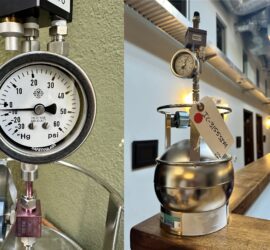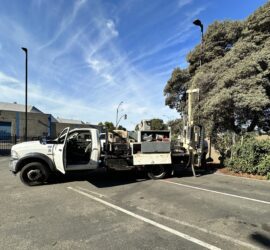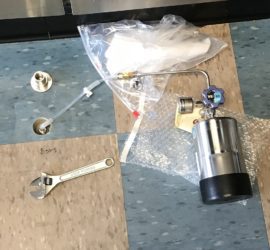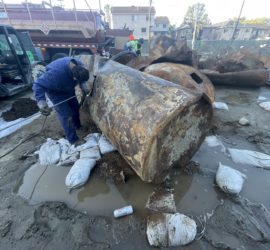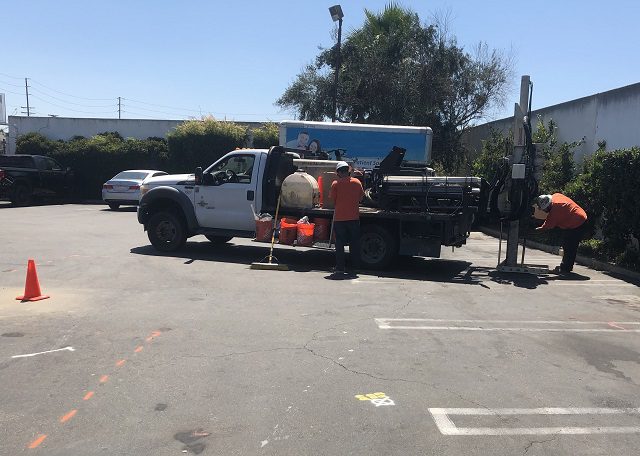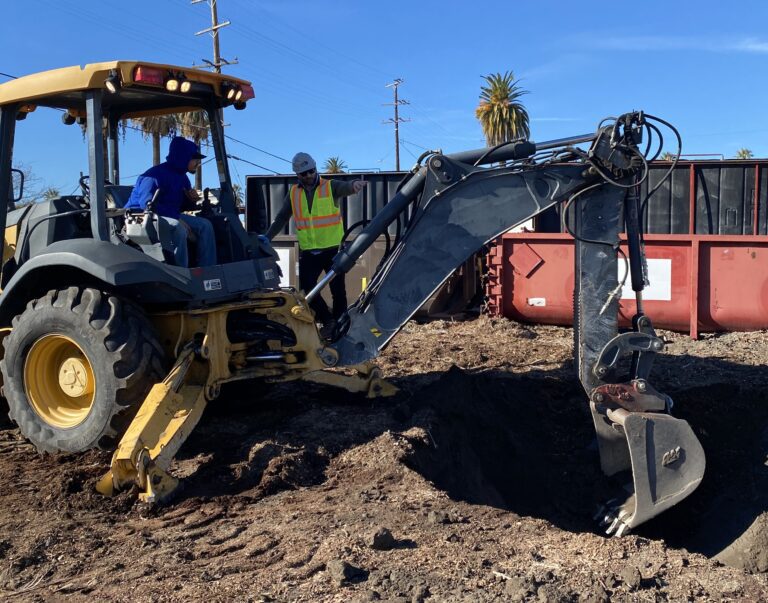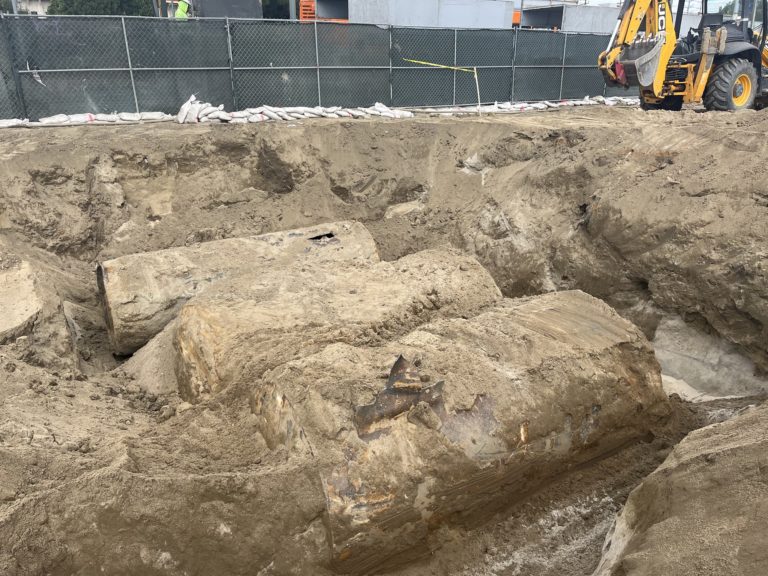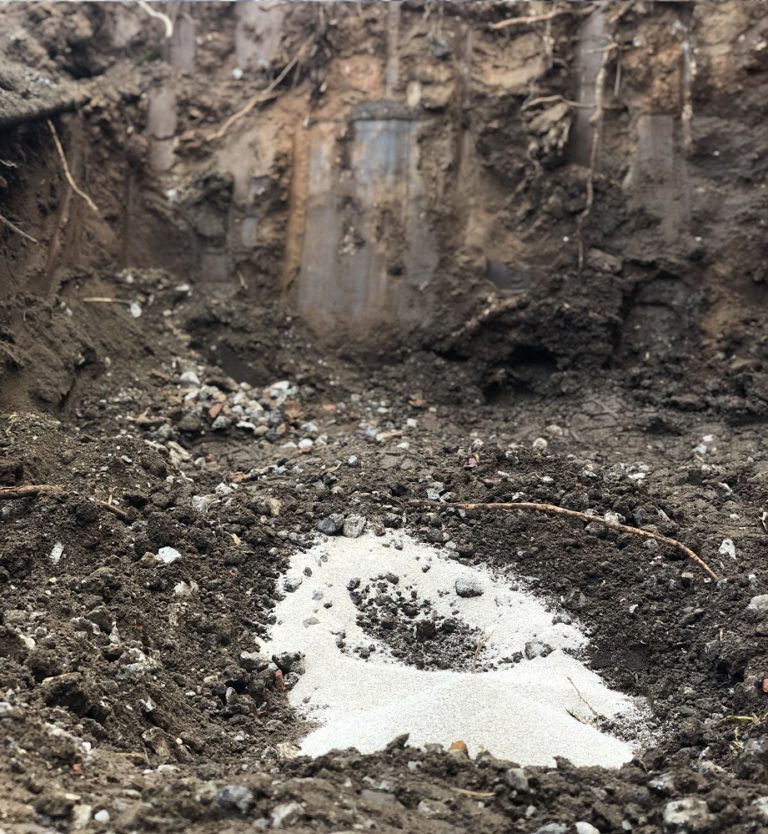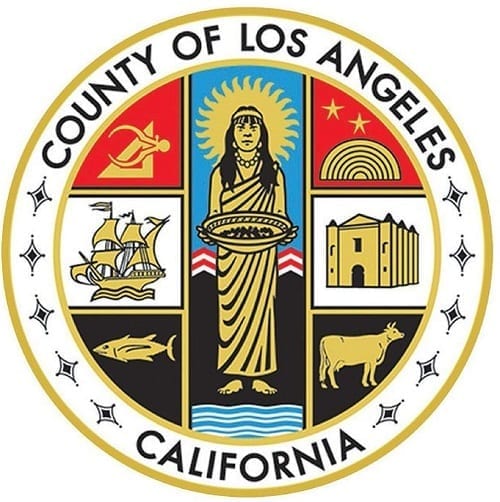Dry Cleaner Soil Testing
Dry cleaner soil testing is an environmental engineering and geology service that aims to determine the presence of chemical contamination to the subsurface, resulting from dry cleaning operations. The primary contaminant of concern during dry cleaner soil testing is tetrachloroethylene (PCE), as well as its break-down products. PCE is a manufactured volatile organic compound that doubles in use as an industrial solvent, as well as a cleaning agent of fabrics. In the scientific community, PCE is a chemical of concern, mainly due to its carcinogenic properties, along with its high mobility tendencies and groundwater solubility characteristics. Moreover, PCE can breakdown over time, into various other chemical products that also hold presumable carcinogenic properties. Updated December 8, 2025.
Dry Cleaner Soil Testing during Phase 2 Environmental Site Assessment
Dry cleaner soil testing is a common requirement during commercial real estate due diligence periods. This includes Phase 1 Environmental Site Assessments and Phase 2 Environmental Site Assessments. Today, commercial real estate professionals and investors are well aware of the legal ramifications of innocently acquiring properties with contamination issues. As a result, it is reasonable to presume that most lots comprising this activity will, at some point, entail dry cleaner soil testing. This process can become a requirement upon buying or selling a lot. In fact, merely applying for an equity loan on a property with dry cleaning history will result in some kind of environmental due diligence investigation.
Commercial Real Estate Environmental Due Diligence
Today’s standard for commercial real estate due diligence typically starts with a Phase I Environmental Site Assessment (Phase I ESA). Only when the conclusions of a Phase I ESA recommend further action, does a Phase II Subsurface Investigation become necessary. However, due to the environmental risk, savvy lenders and investors occasionally insist on a Phase II Subsurface Investigation that is simultaneous to the Phase I ESA.
Performing a Phase I ESA & Phase II ESA at the Same Time
In fact, an environmental professional may not recommend performing a Phase II Subsurface Investigation at the same time as a Phase I ESA. For instance; other recognized environmental conditions (RECs) might not become apparent until the final stages of the Phase I Environmental Site Assessment. And upon prematurely commencing the Phase 2 ESA which aims solely to test for dry cleaner contaminants, half (or more) of the Phase I ESA recommendations may be missed. Consequently, the Phase 2 ESA will have considerable data gaps, disqualifying it from CERCLA Innocent Landowner Liability Protection laws.
Dry Cleaner & Gas Station Examples
For example; during escrow for a lot with a dry cleaning business, the buyer requests to perform both Phase 1 & Phase 2 ESAs at once. As a result, the Phase 2 ESA fieldwork commences on Day 1, with a scope of work specifically for dry cleaner soil testing. However, by day 10 of the Phase 1 ESA, the environmental professional discovers a gasoline service station on-site from the year 1930. In such a case, the likelihood of old fuel tanks being in place is high, along with the potential for gasoline and diesel contamination. However, the already-performed Phase 2 ESA fieldwork didn’t comprise a geophysical survey, nor the analysis of gasoline contaminants.
How Dry Cleaner Contamination Happens
Various types of dry cleaning agents have been in use since the early 1900s. But the most common substance is tetrachloroethylene (PCE). In the liquid phase, PCE and other break-down chemicals easily migrate through concrete slabs and soil layers. As a result, the bulk of the dry cleaning solvent passes right through the shallower soils and accumulates in deeper zones. And in some cases, the PCE can leach into groundwater zones, and spread per the aquifer characteristics.
During the vertical migration process, trace amounts of solvent will remain within the pore spaces of the dry soil layers it passes through. Over time, evaporation occurs causing an abundance of toxic soil vapor intrusion issues. Consequently, shallow soil samples usually don’t yield representative data at historical dry cleaners. Instead, vapor phase PCE, TCE, and other volatile organic compounds are detected at higher concentrations at shallow depths. Ironically, fractions of the very same toxic material released into the ground evaporate and migrate right back into the breathing zone of the building. At this point, the vapor phase chemical remains toxic but colorless and odorless.
Some level of a subsurface release, however slight, is a reasonable expectation at any historical dry cleaner site. In general, older dry cleaning facilities have a higher potential for contamination. This is because of the prevailing use of PCE prior to the 1990s. Moreover, older machinery typically lacks the secondary containment and leak-prevention features that newer devices comprise. Other potential pathways of PCE subsurface contamination exist in the onsite sewage and drainage system, as well as waste storage areas. Modern facilities can upgrade equipment with leak prevention systems and also operate using environmentally friendly solvents. However, it is the historical releases of PCE that could still pose environmental concerns for landowners well into the future.
Smaller Steps in Dry Cleaner Soil Testing
Commercial real estate professionals occasionally request a series of limiting subsurface investigations for decision-making purposes. For example, a sub-slab soil gas intrusion screening, or shallow soil gas survey provides a brief snapshot of under-slab conditions. Limiting scopes such as these do not qualify to be a Phase 1 ESA or Phase 2 ESA, and do not satisfy the All Appropriate Inquiries rule. In fact, sub-slab soil gas surveys are now less regarded and are not supported by the scientific community standards. However, the information might be applicable to determine whether dry cleaning solvent contamination is an issue, however slight. Reports such as these, are not likely to satisfy lenders, as they do not meet the ASTM standard for a Phase II Environmental Site Assessment or Phase 2 Subsurface Investigation.
Dry Cleaner Remediation
In some cases, a dry cleaner Phase II ESA may reveal soil and groundwater contamination above the actionable level. As a result, remedial action becomes a requirement, with regulatory agency oversight. Alternatively, commercial real estate investors can also voluntarily take on dry cleaner contamination remediation and mitigation. Using modern technology, geologists and engineers apply a combination of methods to clean-up the contamination to soil and groundwater. Additionally, environmental scientists can implement vapor intrusion safety components into buildings, in an effort to eliminate PCE health risk effects. Best practice remediation and mitigation methods vary from site to site, in terms of applicability. Typical remedial action methods are soil vapor extraction, air-sparge, groundwater pump/treat, and chemical injection. One or all of these methods are applicable to accelerate the degradation of contaminants.


